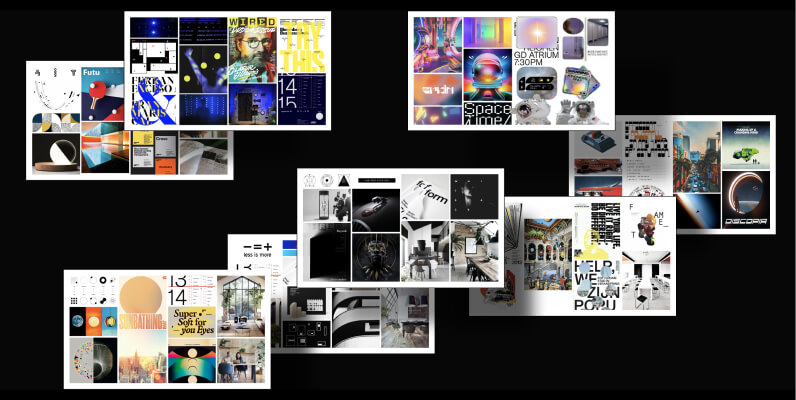What is brand personality
and how to discover one?
▉ on process ▉ 5 min to read
The way brands build reputation is similar to the way we build ours. It's all about actions, values and personality.
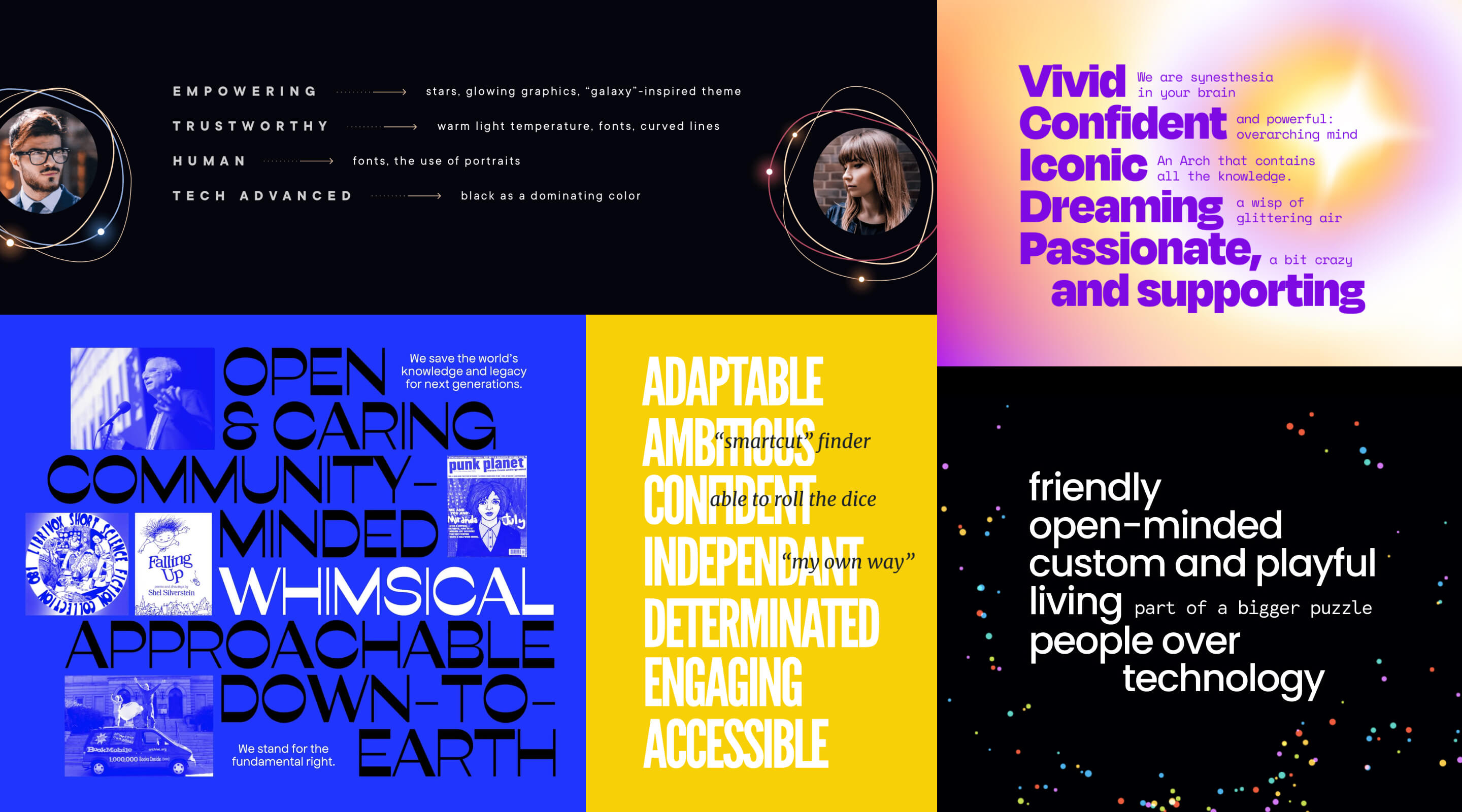
The ultimate goal of a growing company is to build long-lasting relationships with its customers — the users of a new product, the attendees of a hackathon, the readers of an online magazine.
Your company should aim for this too.
It is hard to imagine how humans can have meaningful relationships with their headphones or wallet, protocol, or even a website with long-form content. People build relationships with other people, whether these are individual connections or community involvement. But how do they do it with a product or service?
Remember a time when you met a stranger and talked to them? If you go to in-person events, you are familiar with this situation. First, you evaluate a person by their looks:
Do they seem interesting?
Do you feel comfortable starting a conversation?
Do they look like they have the sorts of experiences you are looking for right now?
And then you start a conversation.
How do you like it? Is it never-ending small talk? Or did you start discussing something that excites you right away? Is it casual? Or more like a lecture? What about the voice of this person? The speed at which they talk?
Now you have interacted with a person on two levels: visual and verbal. Based on your first impression, would you like to meet them again? What about doing something together over a longer period of time?
And so a relationship begins. From this moment on, it’s a game of human behavior, values, and attitudes from both of you.
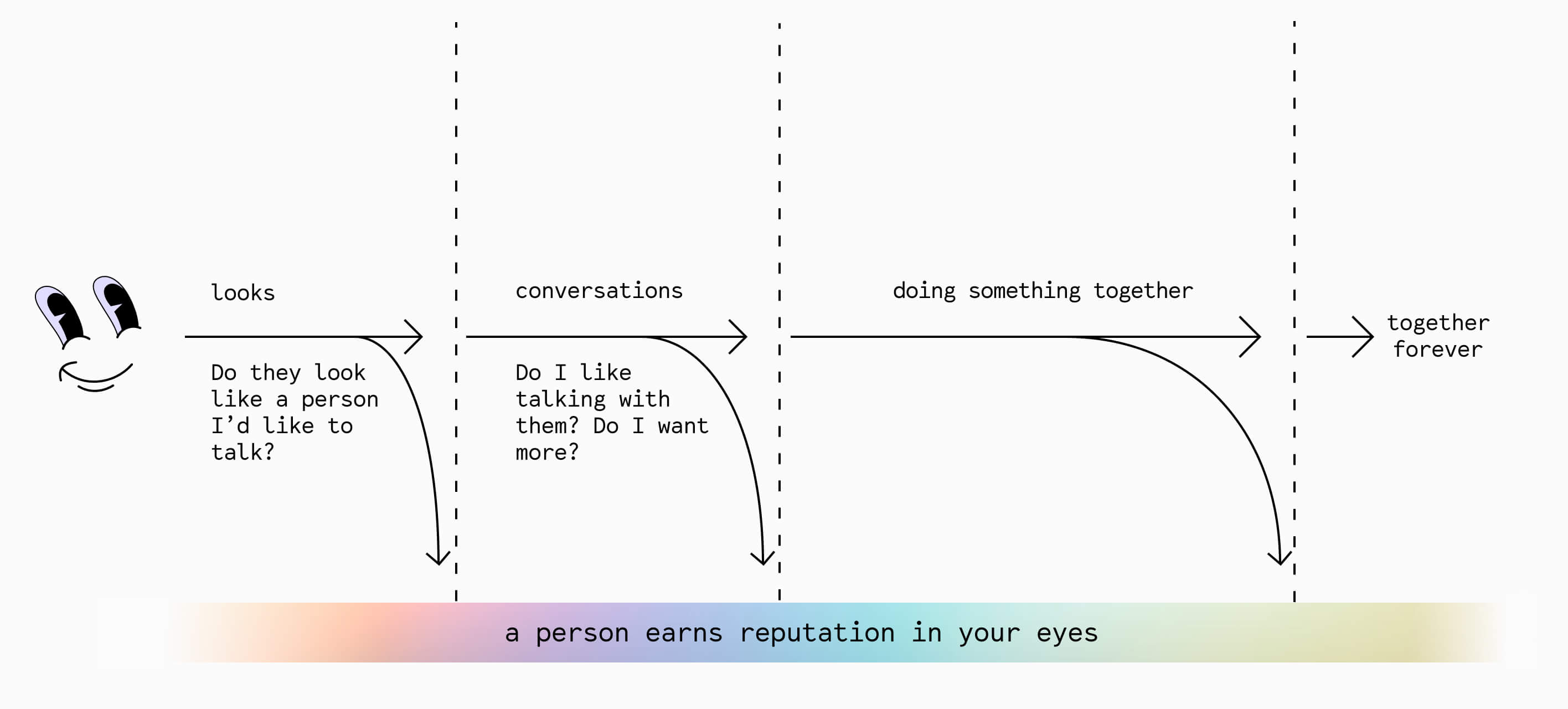
The way we meet and evaluate brands is very similar to the way we meet and begin relationships with people. In the end, there are humans behind every brand.
Because of this, in branding we give products and services a human personality.
If a product was a person:
— How would they look? And what would they wear?
This is your visual identity.
— How would they sound? And what would they talk about?
This is your content strategy.
— How would they behave? Would they entertain or educate you? Are they an easy-going friend or a reliable business partner? Are they fast-paced or casual and relaxed?
This is your user experience.
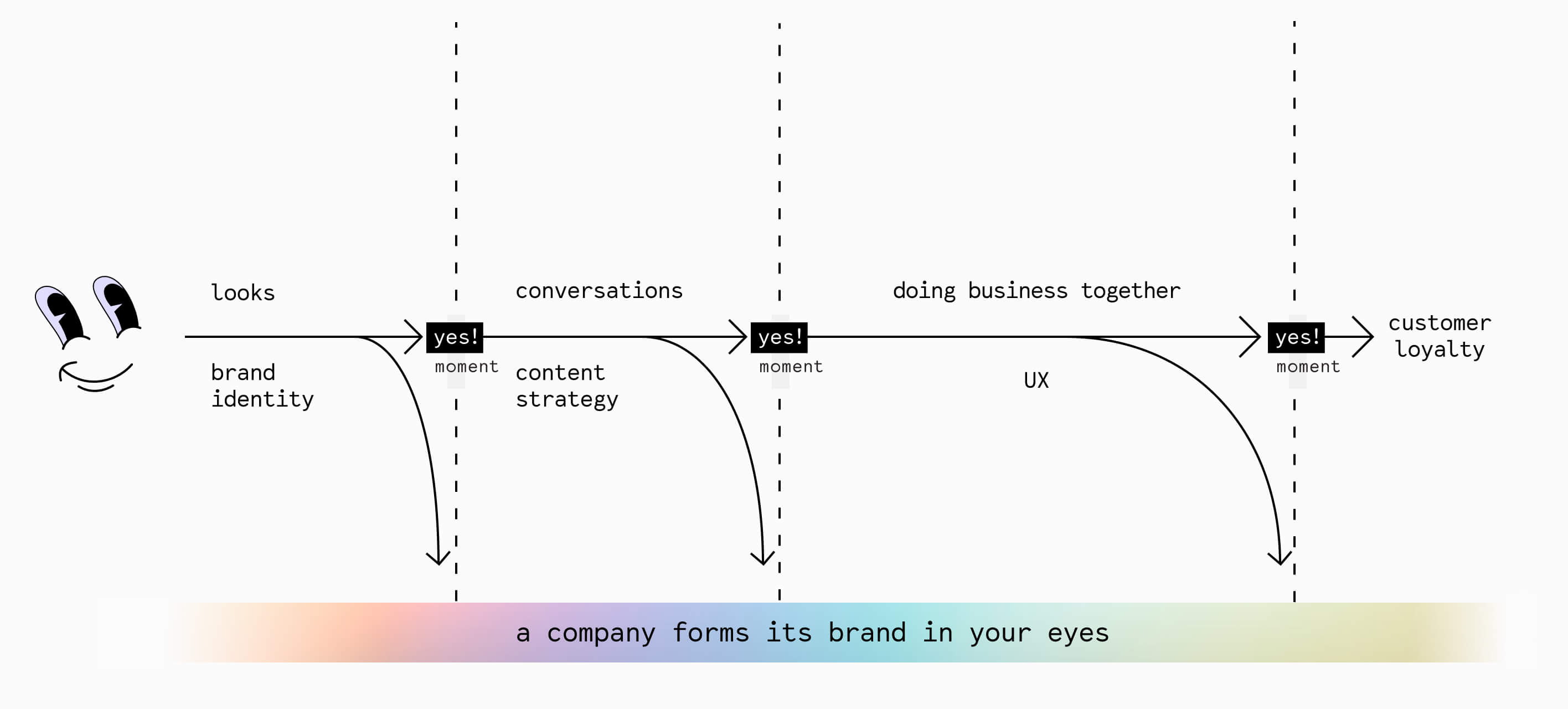
Brand self-awarenness
Dear Reader,
If you are a founder, think of discovering the brand personality for your company as a way of building the company's self-awareness. How are the actions and emotions your brand evokes aligned with your internal values?
It is difficult to build true self-awareness on your own. Yes, you can spend a lot of time reading DIY books. But it’s so easy to mistakenly name the wrong attributes or confuse real aspirations!
This is why — although they may ask “How do you describe yourself?” — psychologists will rarely treat your direct answer to this direct question as reliable data to work with. They will give you a test instead.
The same situation happens at the very beginning of the brand design process — the moment a designer asks you to fill out a creative brief.
If someone asks you right away, “If your brand was a person how would you describe it like it to be perceived?”, that’s an okay start, but it only skims the surface.
Are we looking for the hidden gems of your brand personality? If yes, we need to work harder and dig deeper.
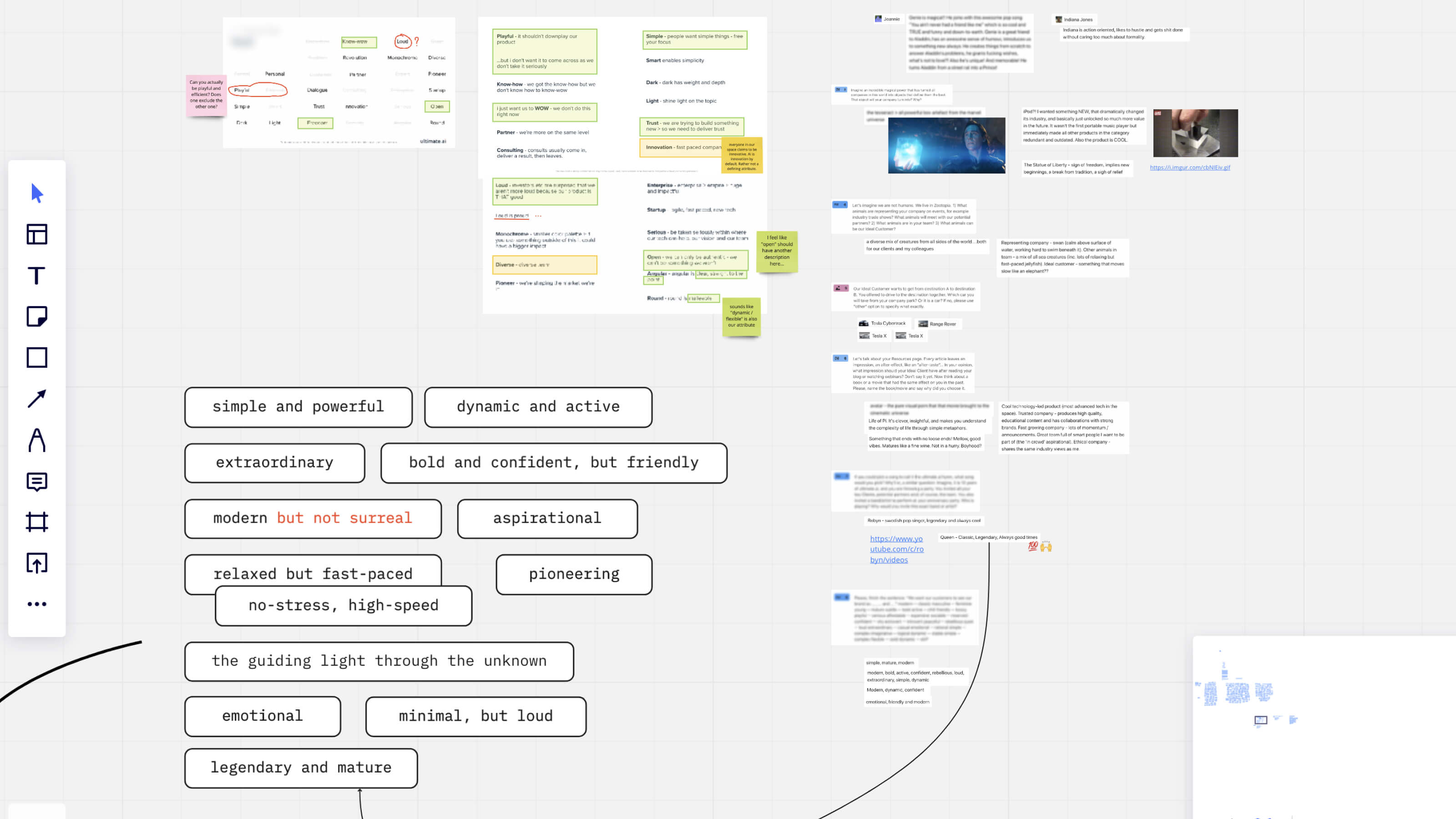
How to dig gems
Over the years of my branding practice, I have developed a set of questions that allow me to dig deep. In 2022, this set of questions became a part of Crcle’s design process for crafting brand images for companies in the Protocol Labs network.
This survey has only one “surface” question, which I ask last.
The other nine are about music, animals, and . . . the magic that turns companies and services into objects. Every question is followed with a WHY sub-question. Those WHYs uncover a true aspirational personality and help to align project stakeholders.
■
Here is a recent favorite example. A true story. (I’m very proud of this case!)
In 2021 I was asked to help one AI-focused company kickstart its rebranding. We had two founders involved in the process. Both founders received the same brand personality survey to complete independently.
One of the survey questions was:
“Imagine: it is the ten year anniversary of your company, and you are throwing a party. You invited all of your key clients, partners, and, of course, the team. You also invited a famous musician to perform. Who is playing? Why did you choose them specifically?"
One founder named Robyn as their top choice. The other wanted to ask Queen.
What exactly do these artists have in common? This is where the WHY-question enters the picture:
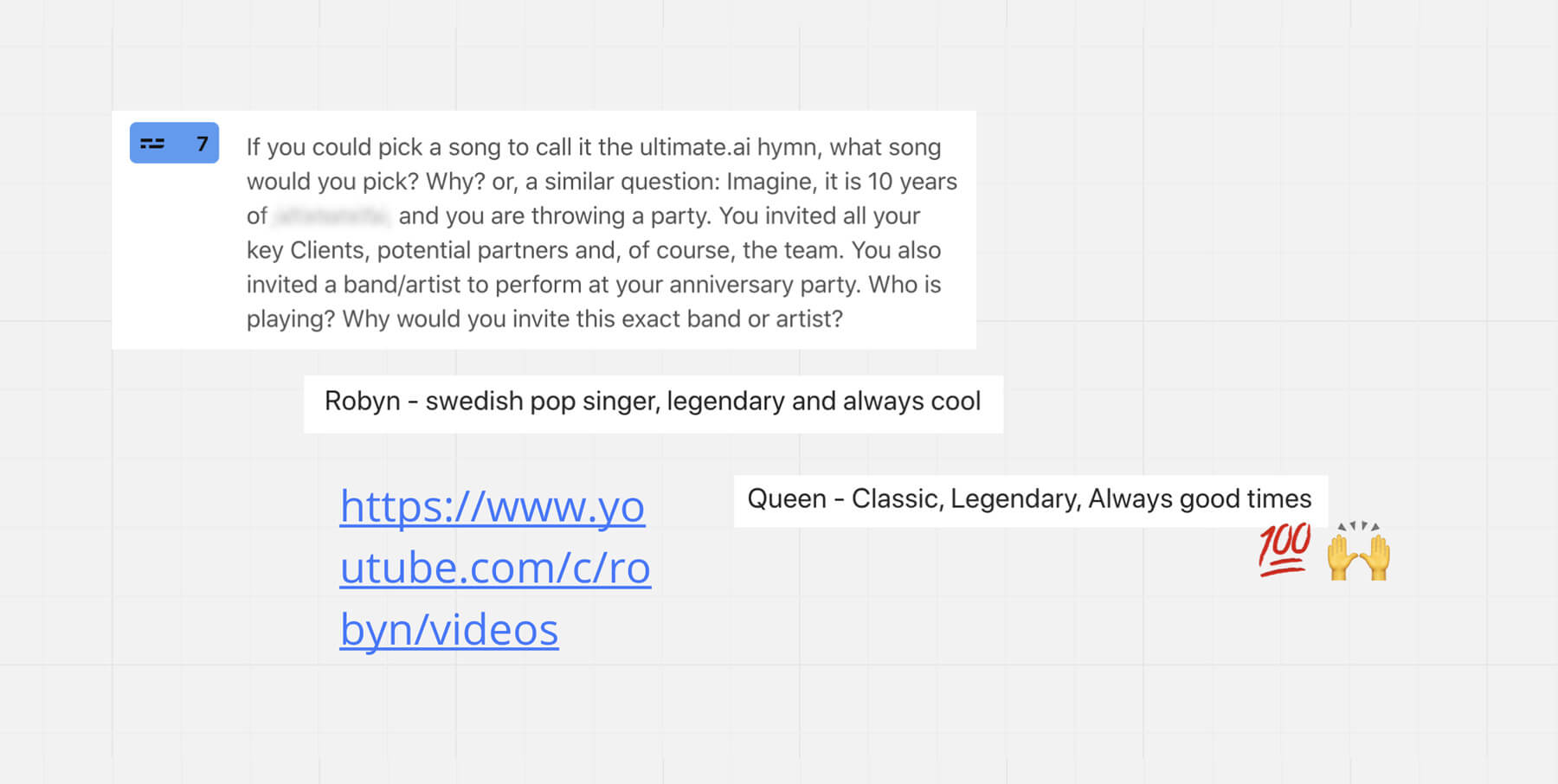
Do you see what is happening here?
Two people, in a completely async way, picked the same word “legendary” to describe their brand perception. And “legendary” is not so common attribute on the list!
We found a gem.
Keep digging — there may be more.
■
All people have personalities. But not everyone has the guts to show their true self to others. Those who do, stand out and are often remembered by strangers.
Brands are no different. And it is in a designer’s hands to project brand personality through visual identity—or to let a brand stay trend-driven, bland, good-for-everyone-remembered-by-noone.
Don’t take shortcuts.
Dig for hidden gems.
Show them to us.
Learn how to bootstrap your tech brand in less than 12 min per week, for free.
Every week, get one insight on brand strategy, one actionable technique to design-it-yourself and one curated list of aesthetic excellence. Use this 3-in-1 combo to build a product image that accelerates early adoption and funding.
Get them delivered to your inbox:
Created for developers-turned-founders.
See what's inside
more articles and resources ↓
▉ guide
▉ 33 min to read
▉ guide
▉ 11 min to read
▇▇ work with Ira
Other matters: iryna at nezhynska.com
creative
ⓒ Ira Nezhysnka, 2025
▇▇ learn for free
Subscribe to Ira's Embrace Variety
-
ⓒ Ira Nezhysnka, 2025
